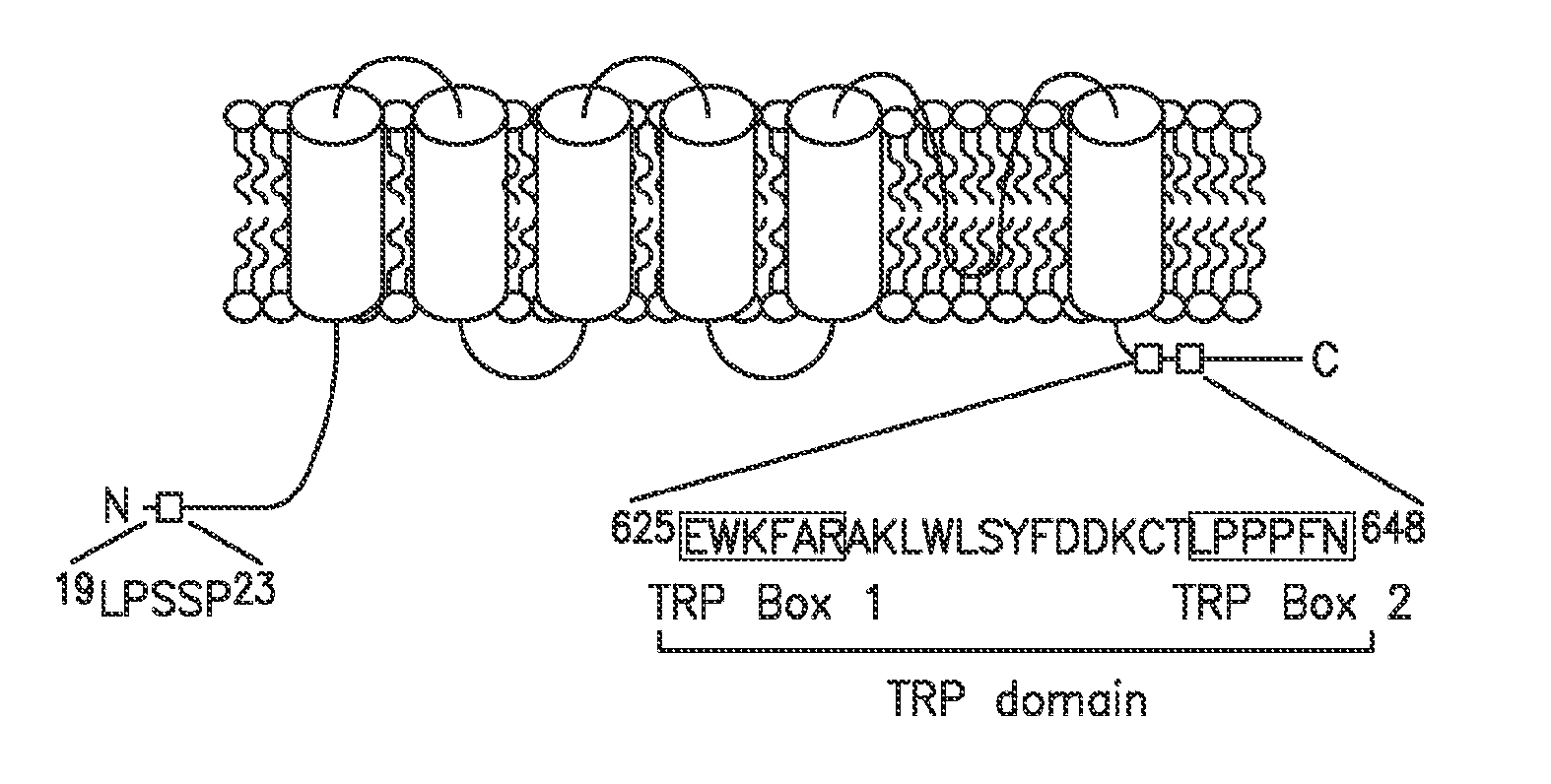Method of Identifying Agents that Promote Axonal Development
a technology of axonal regeneration and agent, applied in the field of methods, can solve the problem of drug-dependent properties of fkbps, and achieve the effect of enhancing axonal outgrowth and enhancing axonal outgrowth
- Summary
- Abstract
- Description
- Claims
- Application Information
AI Technical Summary
Problems solved by technology
Method used
Image
Examples
example
Peptidyl-Prolyl Isomerase FKBP52 Controls Chemotropic Guidance of Neuronal Growth Cones Via Regulation of TRPC1 Channel Opening
[0063]The following example shows that the isomerase function of FKBP52 controls chemotropic guidance of neuronal growth cones in vitro and in vivo through regulation of TRPC1 channel opening.
[0064]Solutions, reagents and clones. Homer, TRPC1, FKBP12, and FKBP52 constructs were described previously. Point mutations were generated by site-directed mutagenesis (Stratagene). The antibodies used were monoclonal anti-myc and HRP-conjugated anti-myc and anti-HA (all from Santa Cruz Biotech), rabbit polyclonal anti-Homer 3, monoclonal anti-IP3 receptor type 3 (for co-IP) (BD Biosciences), goat polyclonal anti-pan-IP3 receptor (for Western blotting), rabbit polyclonal anti-FKBP59 / FKBP52 (Affinity BioReagents), and monoclonal anti-mGluR1a (BD Biosciences). Plasmid transfection was done using calcium phosphate for 6 hours, washed once with 1×PBS, and replaced with reg...
PUM
| Property | Measurement | Unit |
|---|---|---|
| temperature | aaaaa | aaaaa |
| temperature | aaaaa | aaaaa |
| time response assay | aaaaa | aaaaa |
Abstract
Description
Claims
Application Information
 Login to view more
Login to view more - R&D Engineer
- R&D Manager
- IP Professional
- Industry Leading Data Capabilities
- Powerful AI technology
- Patent DNA Extraction
Browse by: Latest US Patents, China's latest patents, Technical Efficacy Thesaurus, Application Domain, Technology Topic.
© 2024 PatSnap. All rights reserved.Legal|Privacy policy|Modern Slavery Act Transparency Statement|Sitemap



